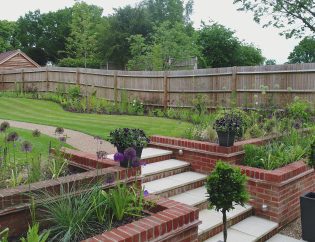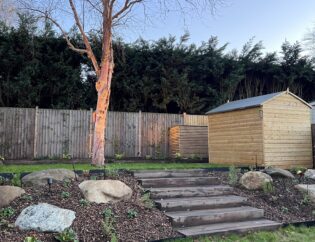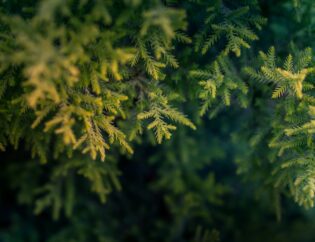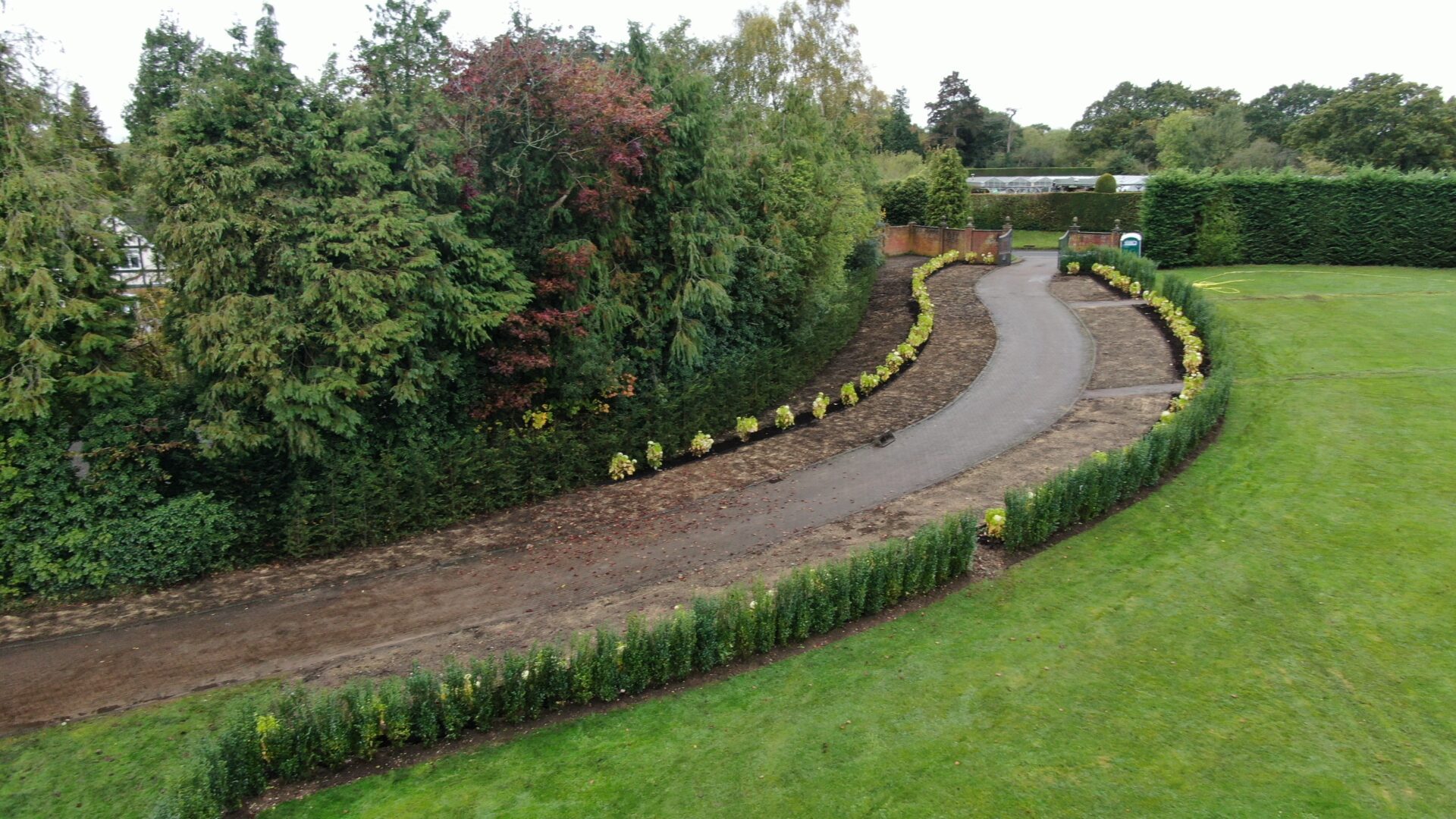
Aye's Advice: Evergreen hedging: Our 10 favourite varieties
In our last post, we wrote about using native hedging in your garden design. Continuing our look at hedges, this post looks at the benefits of using evergreen hedging in your project. We’ll also share our top ten favourite evergreen hedge varieties.
Why choose evergreen hedges?
There are many benefits to using hedges in your garden design. Evergreen hedges have particular advantages:
- Year-round privacy: Evergreen hedges can be a natural and effective privacy screen. Your property will remain secluded even during the winter months when deciduous hedges and other shrubs and trees lose their leaves.
- Aesthetic appeal: Evergreen hedges provide a continuous backdrop of green in your garden. These hedges add structure and formality to your space while maintaining their vibrant greenery throughout the year.
- Windbreaks: Evergreen hedges can be reliable windbreaks, protecting your garden and property from strong winds. This can be particularly beneficial in exposed areas.
- Sound barrier: Most hedges give an element of sound reduction from nearby roads and neighbours. The year-round leaves of evergreen hedges can add further soundproofing.
- Ecological value: Like all native hedges, evergreen varieties provide habitat and sustenance for local wildlife, including birds and insects. This contributes to the overall biodiversity of your surroundings.
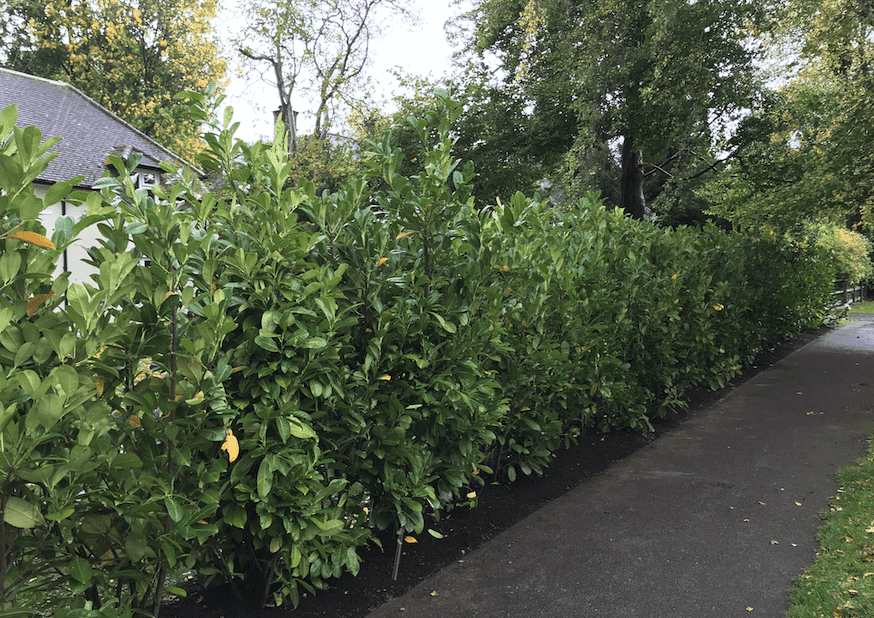
Our 10 favourite varieties for evergreen hedging
We regularly use evergreen hedges in our garden designs. Over the years we have discovered our go-to varieties, and we’re sharing them here. We hope our Top Ten will inspire you when choosing your evergreen hedging:
- Yew (Taxus baccata): Yews are known for their deep green, needle-like leaves and striking red, berry-like structures known as arils that appear in autumn. Their dense growth provides effective year-round privacy and sound insulation, making them an excellent choice for those who value both aesthetic appeal and functionality in their garden. But beware! The seeds of these small, vibrant arils are highly toxic to humans and many animals. The yew is also known for its longevity. Yew hedges and trees can live for centuries with proper care. They are often seen in churchyards and traditional gardens, serving as both a symbol of endurance and eternity, as well as being an embodiment of natural beauty.
- Laurel (Prunus laurocerasus): Cherry laurel is a fast-growing evergreen hedge with large, glossy leaves. It forms an excellent screen and is particularly well-suited to coastal areas due to its salt tolerance. It’s also known for its quick establishment, making it an ideal choice when you need a fast, effective screen. In late spring, the cherry laurel produces clusters of small, fragrant white flowers that add charm to your garden, attracting bees and other pollinators.
- Portuguese laurel (Prunus lusitanica): This versatile evergreen hedge boasts attractive dark green leaves and small, fragrant white flowers. Portugues laurel is a resilient, versatile choice, known for its adaptability to various soil types and weather conditions. This hedge offers year-round privacy and ornamental value, making it a popular choice for both formal and informal settings. It can be easily pruned to achieve the desired shape, from neat, well-defined hedges to more relaxed, informal screens.
- Viburnam Tinus: Viburnam Tinus is a winter-flowering hedge. We are especially fond of the variety “Eve Price”, which has masses of dainty pinkish-white flowers in late winter to early spring. This variety is known for its low maintenance and adaptability to different soil types, making it a popular choice for domestic gardens.
- Griselinia littoralis (Griselinia littoralis): Also known as New Zealand broadleaf, griselinia is an evergreen shrub that has gained popularity in the UK for its lush, glossy green foliage and its ability to create dense, impenetrable screens. This non-native species thrives in coastal areas and is well-suited to the UK's temperate climate. Griselinia is an excellent choice for gardeners looking for a contemporary, exotic look, and it can be easily trimmed to keep a neat appearance. Its tolerance to salt spray and wind makes it ideal for coastal gardens, where it can function as an effective windbreak.
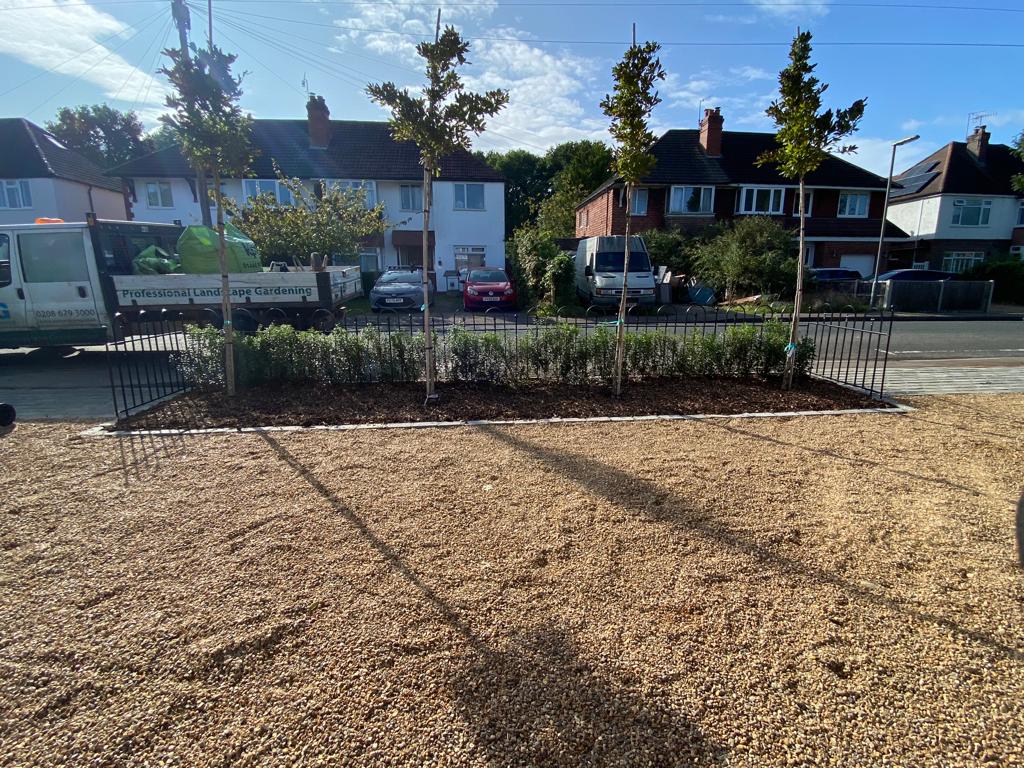
- Privet (Ligustrum): Privet hedges have been a staple in British gardens for centuries. They’re prized for their dense, dark green foliage and their versatility in shaping and pruning. Privet hedges are a popular choice for creating formal, neatly trimmed hedges and are often seen in traditional English gardens. They offer year-round privacy and can thrive in a variety of soil types and light conditions. While there are non-native species of privet, such as the Chinese privet, the common privet (ligustrum vulgare) is native to the UK and supports local wildlife with its berries and shelter.
- Osmanthus: Also known as sweet olive, osmanthus is a fragrant evergreen shrub. Its dark green, leathery leaves provide year-round interest, and its small, highly scented white flowers, which bloom in late summer or early autumn, fill the air with a delightful fragrance. Osmanthus is a versatile choice for hedges and is suitable for formal and informal spaces.
- Elaeagnus: Often referred to as silverberry or oleaster, elaeagnus is a versatile evergreen shrub known for its silvery-green foliage. Several species and cultivars are popular choices for hedging in the UK, with Elaeagnus x ebbingei being one of the most commonly used. This hedge variety is valued for its tolerance to a wide range of soil conditions and its ability to thrive in coastal areas. Elaeagnus hedges offer year-round visual interest due to their unique foliage and small, fragrant flowers that appear in autumn. Their silver leaves catch the sunlight beautifully, adding a contrast to other green foliage in the garden.
- Photinia: Photinia, particularly Photinia x fraseri (“Red Robin”), is a stunning evergreen hedge choice for those seeking vibrant colour and year-round interest. The new growth of photinia hedges emerges as bright red or bronze, creating a striking contrast against the mature green foliage. This colour transformation occurs several times a year, providing continuous visual appeal. In late spring or early summer, photinia produces small white flowers, which can be an additional attraction for pollinators.
- Holly (Ilex aquifolium): Holly is perhaps the most well-known evergreen shrub, treasured for its glossy, spiky leaves and festive red berries. This quintessentially British hedge provides shelter and sustenance for wildlife, including birds and insects, enhancing local biodiversity. Holly's evergreen foliage remains vibrant throughout the year, adding structure and colour to your garden. But it comes into its own at Christmas time when this symbol of festivity is used for decoration and celebration.

Evergreen hedging is a practical and attractive choice for a garden. Whether you want vibrant greenery as a backdrop to your planting, or more formal, structural planting in your garden, our selection will provide some suggestions for options that will work for your outdoor space.
If you need help to design your garden or select the best shrubs for your hedge, please get in touch!


